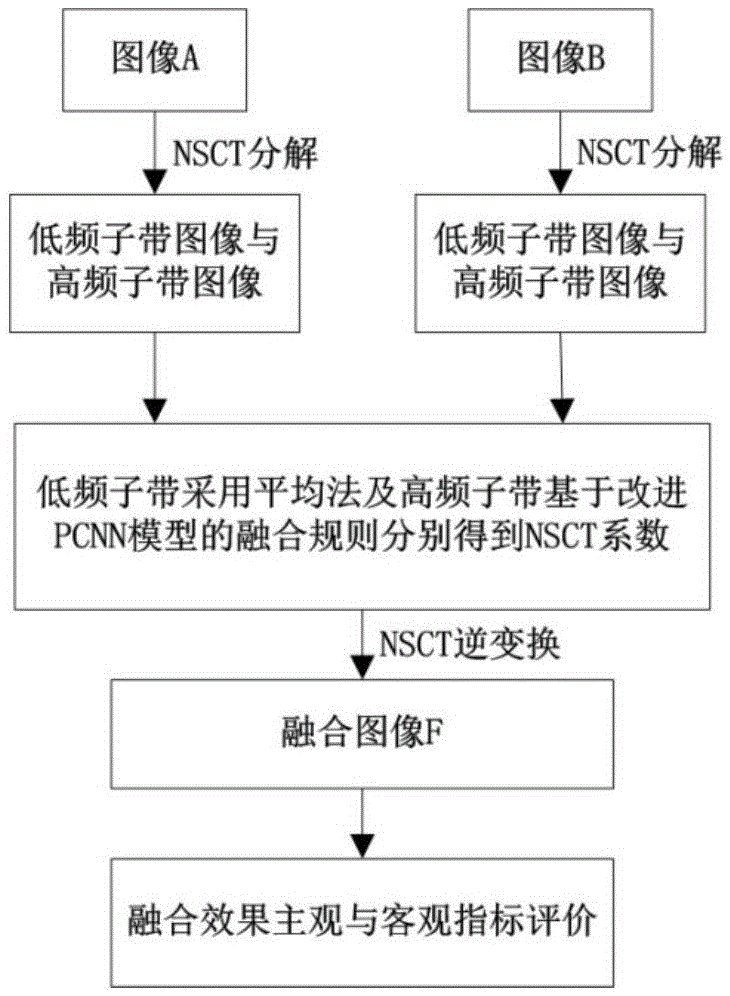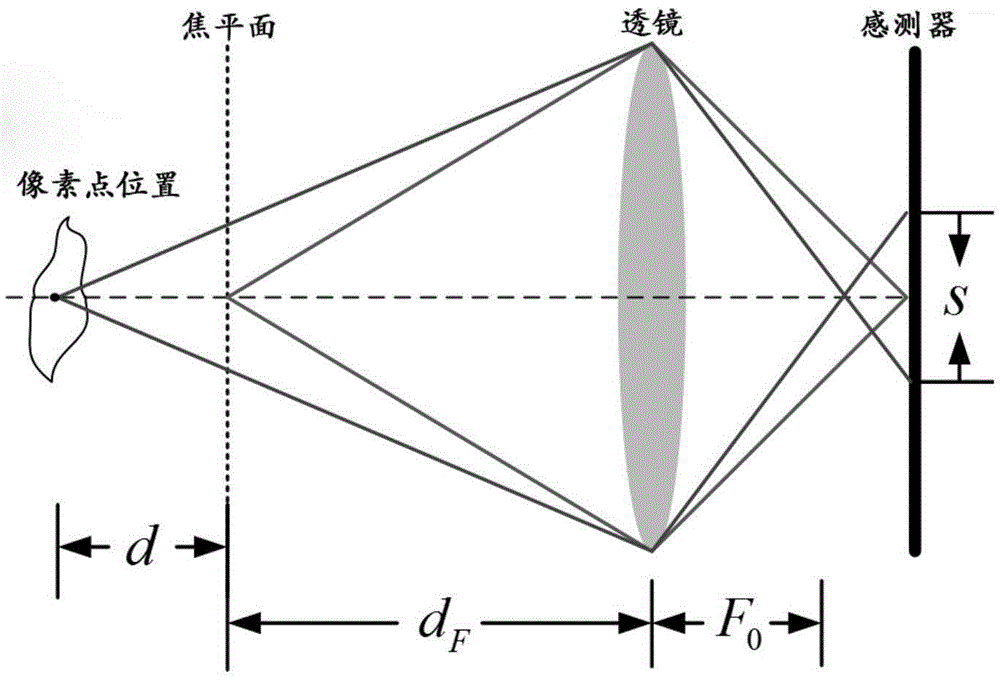Multi-focus image fusion method based on NSCT (Non-Subsampled Contourlet Transform) and depth information incentive PCNN (Pulse Coupled Neural Network)
A multi-focus image and depth information technology, applied in image enhancement, image analysis, image data processing, etc., can solve the problems of fusion image distortion, pseudo-Gibbs phenomenon, and lack of translation invariance
- Summary
- Abstract
- Description
- Claims
- Application Information
AI Technical Summary
Problems solved by technology
Method used
Image
Examples
Embodiment Construction
[0040] The present invention is based on non-subsampling Contourlet transform and depth information to stimulate PCNN's multi-focus image fusion method, such as figure 1 Shown: The same non-subsampling Contourlet transformation is performed on the original input multi-focus image to obtain a low-frequency sub-band image and a series of multi-resolution and multi-directional high-frequency sub-band images. Then apply different fusion strategies to the low-frequency sub-band and high-frequency sub-band to obtain fusion coefficients, and finally perform non-subsampling Contourlet inverse transformation on the obtained fusion coefficients to obtain the final fusion result. The specific steps are as follows:
[0041] (1) On the basis of the preprocessing of the registration of the multi-focus images of the same scene, the multi-focus images I A and I BPerform multi-scale, multi-directional non-subsampling Contourlet transformation, and decompose each of the two images into a low-...
PUM
 Login to View More
Login to View More Abstract
Description
Claims
Application Information
 Login to View More
Login to View More - R&D
- Intellectual Property
- Life Sciences
- Materials
- Tech Scout
- Unparalleled Data Quality
- Higher Quality Content
- 60% Fewer Hallucinations
Browse by: Latest US Patents, China's latest patents, Technical Efficacy Thesaurus, Application Domain, Technology Topic, Popular Technical Reports.
© 2025 PatSnap. All rights reserved.Legal|Privacy policy|Modern Slavery Act Transparency Statement|Sitemap|About US| Contact US: help@patsnap.com



